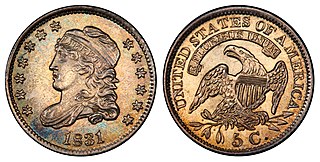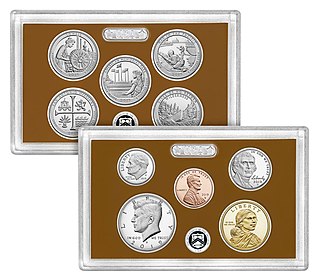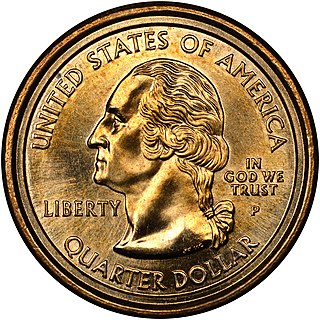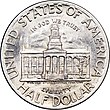Coins of the United States dollar were first minted in 1792. New coins have been produced annually and they make up a valuable aspect of the United States currency system. Today, circulating coins exist in denominations of 1¢, 5¢, 10¢, 25¢, 50¢, and $1.00. Also minted are bullion and commemorative coins. All of these are produced by the United States Mint. The coins are then sold to Federal Reserve Banks which in turn are responsible for putting coins into circulation and withdrawing them as demanded by the country's economy.

The United States Mint is a bureau of the Department of the Treasury responsible for producing coinage for the United States to conduct its trade and commerce, as well as controlling the movement of bullion. It does not produce paper money; that responsibility belongs to the Bureau of Engraving and Printing. The first United States Mint was created in Philadelphia in 1792, and soon joined by other centers, whose coins were identified by their own mint marks. There are currently four active coin-producing mints: Philadelphia, Denver, San Francisco, and West Point.
The United States Mint has minted numerous commemorative coins to commemorate persons, places, events, and institutions since 1848. Many of these coins are not intended for general circulation, but are still legal tender. The mint also produces commemorative medals, which are similar to coins but do not have a face value, and therefore are not legal tender.

The 50 State quarters was a series of circulating commemorative quarters released by the United States Mint. Minted from 1999 through 2008, they featured unique designs for each of the 50 US states on the reverse.

The Eisenhower Commemorative silver dollar is a United States commemorative coin minted in 1990 to celebrate the 100th Anniversary of the birth of General/President Dwight D. Eisenhower. This coin is not to be confused with the Eisenhower dollar or the Eisenhower Presidential dollar which were regular issue American coins.

The Carson City Mint was a branch of the United States Mint in Carson City, Nevada. It primarily minted silver coins; however, it also minted gold coins, with a total face value in dollars nearly equal to that of its silver coins. The mint minted coins in 21 different years.

The West Point Mint is a U.S. Mint production and depository facility erected in 1937 near the U.S. Military Academy in West Point, New York, United States. As of 2019 the mint holds 22% of the United States' gold reserves, or approximately 54 million ounces. The mint at West Point is second only to the gold reserves held in secure storage at Fort Knox. Originally, the West Point Mint was called the West Point Bullion Depository. At one point it had the highest concentration of silver of any U.S. mint facility, and for 12 years produced circulating Lincoln cents. It has since minted mostly commemorative coins and stored gold.

The quarter eagle was a gold coin issued by the United States with a value of two hundred and fifty cents, or two dollars and fifty cents. It was given its name in the Coinage Act of 1792, as a derivation from the US ten-dollar eagle coin.

The half union was a United States pattern coin with a face value of fifty U.S. Dollars. It is often thought of as one of the most significant and well-known patterns in the history of the U.S. Mint. The basic design, featuring Liberty on the obverse, was slightly modified from the similar $20 "Liberty Head" Double Eagle, which was designed by James B. Longacre and minted from 1849 to 1907.
Below are the mintage figures for the Washington quarter.

The Capped Bust coinage of the United States consisted of a half dime, dime, quarter and half dollar.

The United States Mint Proof Set, commonly known as the Proof Set in the United States, is a set of proof coins sold by the United States Mint. The proof set is popular with coin collectors as it is an affordable way to collect examples of United States coinage in proof condition.
The United States Uncirculated Coin Set, known as the Uncirculated Set or Mint Set in the United States, is an annual coin set sold by the United States Mint. The set is marketed towards coin collectors as a way to obtain circulation coins in mint condition.
The Little Rock Central High School Desegregation silver dollar is a commemorative coin issued by the United States Mint in 2007. The coin commemorates the desegregation of the school in the fall of 1957 when nine African-American students enrolled in the school. The obverse of the coin was designed by Richard Masters and sculpted by Charles L. Vickers, while the reverse was designed and engraved by Don Everhart. The coin won the Coin of the Year award from Numismatic News for Best Contemporary Event in 2009.

The 2000 Sacagawea dollar – Washington quarter mule is an error coin featuring the obverse of a Washington quarter and the reverse of a Sacagawea dollar struck on a gold-colored dollar coin planchet. It is one of the first known authentic mule coins to be released into circulation by the United States Mint.
















